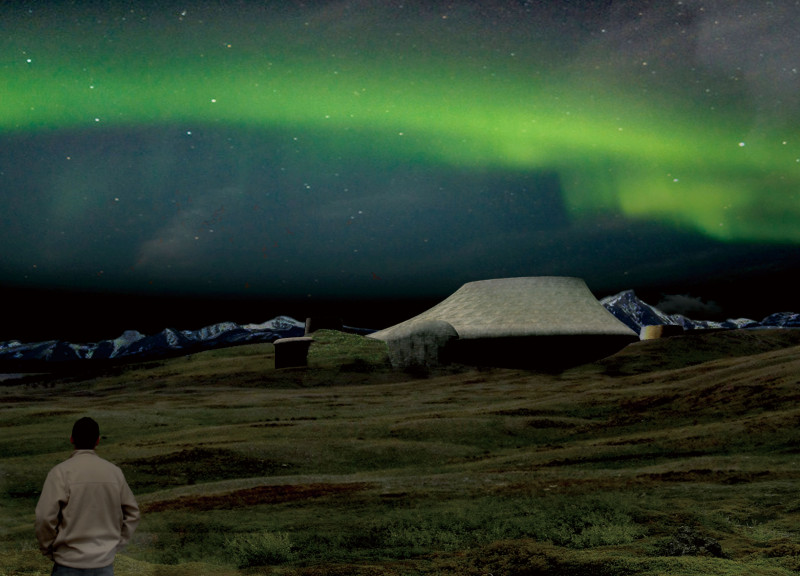5 key facts about this project
The museum is located north of Hverfjall and east of Lake Mývatn, set in a landscape shaped by rugged terrain and small hot springs. Its design seeks to engage visitors while respecting the natural environment. The overarching concept revolves around a building that is partially underground, positioned on a hillside to reduce its visual presence and blend with the surrounding landscape. This creates an atmosphere that enhances the experience for those who come to learn about the area's geology and culture.
Site and Access
The north-facing entrance allows for straightforward access from the main road. This strategic placement helps visitors connect with the site’s natural form as they arrive. The parking area features two sections on either side of the entrance, facilitating smooth visitor flow. A grassy path leads from the parking to the entrance, creating a feeling of exploration right from the start.
Spatial Composition
Inspired by the shape of the nearby Hverfjall crater, the main exhibition hall features a form that reflects its environment. Light wells have been incorporated into the design, allowing natural light to fill the interior spaces. This not only brightens the museum but also allows visitors to experience the changing weather outside. This connection between the inside and the outside enriches the atmosphere, offering a unique experience with each visit.
Visitor Experience
The design includes several sub-exhibition halls and a café, providing additional spaces for visitors to engage with various aspects of the museum. Large windows in the café offer views to the southeast, inviting guests to take in the scenic landscape during their visit. These social areas add to the overall experience, encouraging visitors to relax and reflect on what they have learned.
Design Integration
While the presentation does not specify materials, the focus on sustainability and environmental sensitivity is clear. The overall design emphasizes a careful balance between the human-made and the natural world. Key elements like light wells and the choice for a partially underground structure reduce disruption to the landscape and enhance connections between visitors and the striking geological features that define this part of Iceland.






















































